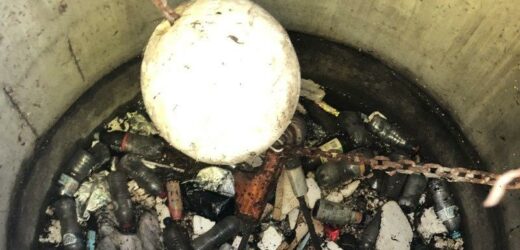Plastic-eating insects, plastic wrappers made from seaweed and cheap cameras in stormwater drains to stop rubbish escaping into nature are some of the ways that the national science agency says Australia can turn its waste problem into an economic earner.
CSIRO is launching a program, backed with $50 million in public and industry funding, to tackle Australia’s multimillion-tonne plastic waste problem with a focus on innovative technologies.
Insects, including mealworms, can digest plastic. Credit:CSIRO
Each Australian generates, on average, about 100 kilograms of plastic waste a year, which is more than 2.5 million tonnes across the nation. Just 13 per cent is recovered while 84 per cent is sent to landfill. By 2050, it is estimated the volume of plastic in the oceans will outweigh fish.
Global plastic production is forecast to double by 2040, so CSIRO chief executive Larry Marshall wants to “reinvent” recycling processes and flip the economic equation so environmentally friendly solutions can become profit drivers for industry.
“So many industries look at things like recycling and emissions and sustainability as taxes on the profit of the business and often, that’s why they don’t get adopted,” Dr Marshall said.
“Science has this wonderful ability to take some of these seemingly impossible problems, and actually turn them around.”
Rubbish trap on stormwater to stop pollution running into rivers.
Insects such as mealworms and waxworms, as well as certain bacteria, can eat plastic and excrete less-harmful, biodegradable waste. Insects have the added benefit of converting the plastic into protein which could, potentially, be used for animal feed or human food products.
“It turns out that certain types of microbes and larger animals, even insects, can consume plastics. That can be a very sustainable, very low-carbon footprint, very low-energy, very low-cost approach,” Dr Marshall said.
Seaweed-derived polymers are a particularly likely area of research. Polymers are made up of long chains of repeating molecular units. They can be man-made or organic and form a vast number of everyday items from hard plastics, glass, paper and rubber.
The head of CSIRO’s Ending Plastic Waste Mission, Deborah Lau, said the agency was researching seaweed-derived polymers that would be compostable and didn’t leave residue or toxic traces in the environment.
“That’s a new type of polymer that replaces petroleum-based polymers and also replaces our dependence on fossil fuel and creates a sustainable way of deriving plastics,” Dr Lau said.
CSIRO is also working on cheap cameras so they can be deployed widely to monitor the movement of plastics through the environment.
“We’re developing some really low-cost cameras that can be networked out in the environment to connect in with traps in our waterways,” Dr Lau said.
Dr Marshall said organic solutions had sound economic potential which was crucial because “if businesses profit, they will do it”.
“When you recycle a polymer, you usually end up with something lower grade, lower quality, and therefore, it costs you money.
“But there’s a way to turn that around using science and technology so that you can actually get a high-quality product.
“You won’t have to force them [businesses], you won’t have to argue with them, they’ll do it because it makes good business sense.”
A guide to the environment, what’s happening to it, what’s being done about it and what it means for the future. Sign up to our fortnightly Clear Air newsletter here.
Most Viewed in Politics
From our partners
Source: Read Full Article




